Toyota C-HR VS Honda Jazz – Specs, Efficiency & Price Comparison
Find out now which car fits your needs better!
The Toyota C-HR (SUV) is powered by a Full Hybrid or Plugin Hybrid engine and comes with a Automatic transmission. In comparison, the Honda Jazz (Hatchback) features a Full Hybrid engine and a Automatic gearbox.
When it comes to boot capacity, the Toyota C-HR offers 447 L, while the Honda Jazz provides 304 L – depending on what matters most to you. If you’re looking for more power, you’ll need to decide whether the 223 HP of the Toyota C-HR or the 122 HP of the Honda Jazz suits your needs better.
There are also differences in efficiency: 0.80 L vs 4.50 L. In terms of price, the Toyota C-HR starts at 29100 £, while the Honda Jazz is available from 23100 £.
Compare all the key specs now and find out which model fits your lifestyle best!
In a head-to-head comparison between the Honda Jazz and the Toyota C-HR, both vehicles offer distinct strengths that cater to different driving needs. The Honda Jazz, known for its spacious interior and remarkable fuel efficiency, is ideal for urban dwellers seeking affordability and practicality. On the other hand, the Toyota C-HR stands out with its bold, coupe-like design and advanced safety features, appealing to those who prioritize style and cutting-edge technology in a compact SUV.
Toyota C-HR
The Toyota C-HR stands out with its distinctive and bold design that combines sleek, angular lines with a sporty posture. Its comfortable and stylish interior is equipped with advanced technology features, providing a seamless driving experience. The vehicle offers impressive handling and performance, making it a compelling choice for those who appreciate a blend of practicality and flair on the road.
details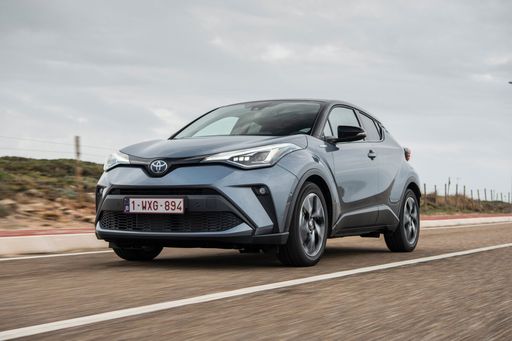 @ Toyota
@ Toyota
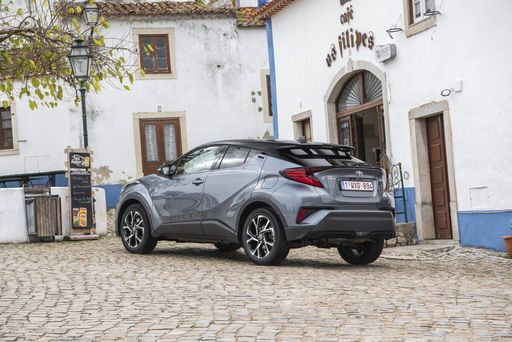 @ Toyota
@ Toyota
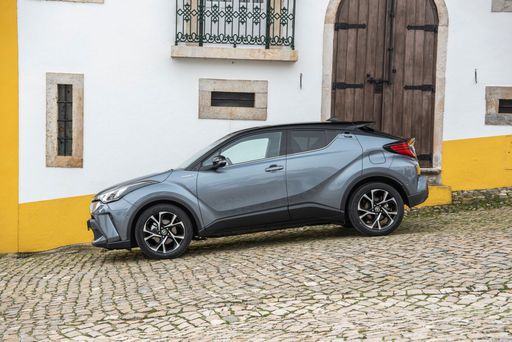 @ Toyota
@ Toyota
 @ Toyota
@ Toyota
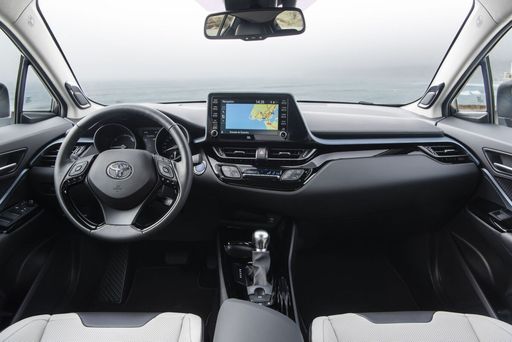 @ Toyota
@ Toyota
Honda Jazz
The Honda Jazz stands out in the compact car category with its intelligently designed interior, offering a surprisingly spacious cabin that comfortably accommodates passengers and luggage. Its efficient hybrid powertrain ensures a smooth and economical driving experience, ideal for both urban commutes and longer journeys. Furthermore, the Jazz is equipped with a range of advanced safety features, providing peace of mind while on the road.
details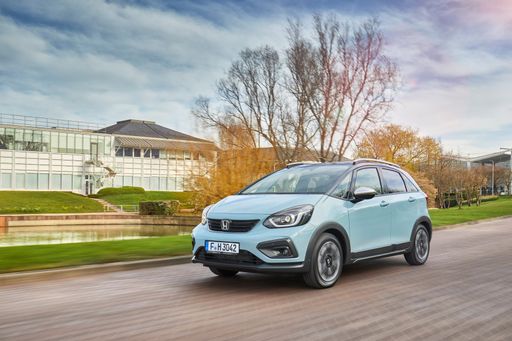 @ hondanews.eu
@ hondanews.eu
 @ hondanews.eu
@ hondanews.eu
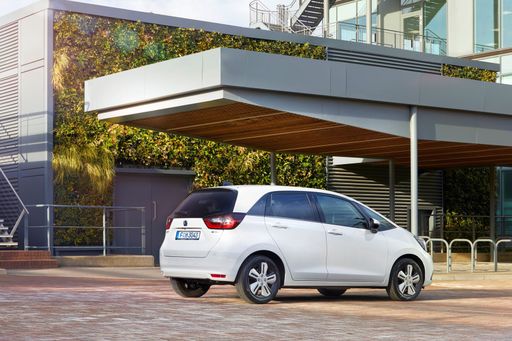 @ hondanews.eu
@ hondanews.eu
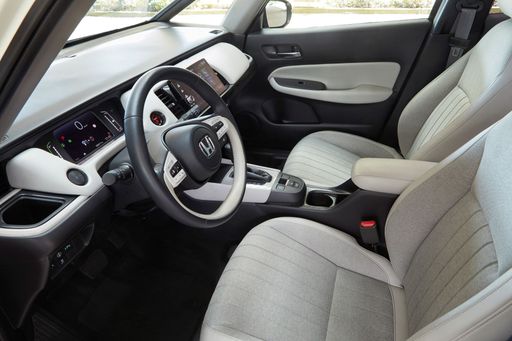 @ hondanews.eu
@ hondanews.eu
 @ hondanews.eu
@ hondanews.eu
Honda Jazz vs. Toyota C-HR: A Clash of Compact Titans
In the world of compact cars, finding a vehicle that fits your lifestyle and driving preferences can be a thrilling yet daunting task. Two contenders that often appear on the shortlist of many potential buyers are the Honda Jazz and the Toyota C-HR. This head-to-head comparison will delve into their technical aspects and innovations to help you make an informed choice.
Design and Dimensions
The Honda Jazz is a hatchback renowned for its practicality and space efficiency. With a length ranging from 4089mm to 4105mm and a height between 1526mm and 1556mm, it offers compact dimensions suitable for urban environments. Its trunk capacity of 304 liters may seem modest but is complemented by the versatile Magic Seats system, allowing users to maximize storage space.
In contrast, the Toyota C-HR embraces an SUV body style, reflecting a bolder and more aggressive stance on the road. It measures 4362mm in length, 1832mm in width, and a height of 1558mm to 1564mm. With a trunk capacity ranging from 350 to 447 liters, it edges out the Jazz in terms of cargo space, catering well to those needing extra storage for adventures and shopping sprees alike.
Performance and Powertrain
The Honda Jazz is powered by a full hybrid engine with 122 HP, providing a blend of performance and efficiency. It's equipped with a continuously variable transmission (CVT) and is a front-wheel drive, achieving a top speed of 175 km/h and reaching 0-100 km/h in around 9.4 to 9.7 seconds. Its fuel consumption is impressively low, ranging from 4.5 to 4.8 L/100km, making it an economical choice for the conscious driver.
The Toyota C-HR offers more variety in its powertrain with both full hybrid and plug-in hybrid options. Its horsepower ranges from 140 to 223 HP, depending on the model, and it can accelerate from 0-100 km/h in 7.4 to 9.9 seconds. With the plug-in hybrid variant, it offers an electric range of up to 68 kilometers, significantly lowering fuel consumption to as low as 0.8 L/100km. The option for an all-wheel-drive enhances its appeal for those needing extra traction.
Innovation and Technology
The Honda Jazz showcases its innovative spirit with the Magic Seats feature, allowing for multiple seating configurations to maximize interior space utility. Its hybrid system ensures smooth and efficient driving, paired with modern infotainment options that keep drivers connected on the move.
Toyota's C-HR stands out with its futuristic design and hybrid synergy drive technology, renowned for its reliability and efficiency. The C-HR’s infotainment system integrates seamlessly into the driving experience, featuring a user-friendly interface. The plug-in hybrid variant also provides an eco-friendly option for urban commuting, emphasizing Toyota's commitment to sustainable driving solutions.
Conclusion
Choosing between the Honda Jazz and Toyota C-HR hinges on your individual priorities. The Jazz excels in offering a compact, efficient option for city driving with clever use of space. On the other hand, the C-HR combines a bolder design, a versatile powertrain array, and technological advancements, appealing to those seeking style with substance. Both vehicles bring commendable strengths to the table, ensuring that either choice will enrich your driving experience.

|

|
|
|
|
Costs and Consumption |
|
|---|---|
|
Price
29100 - 42800 £
|
Price
23100 - 26700 £
|
|
Consumption L/100km
0.8 - 5.1 L
|
Consumption L/100km
4.5 - 4.8 L
|
|
Consumption kWh/100km
-
|
Consumption kWh/100km
-
|
|
Electric Range
68 km
|
Electric Range
-
|
|
Battery Capacity
-
|
Battery Capacity
-
|
|
co2
17 - 115 g/km
|
co2
102 - 108 g/km
|
|
Fuel tank capacity
43 L
|
Fuel tank capacity
40 L
|
Dimensions and Body |
|
|---|---|
|
Body Type
SUV
|
Body Type
Hatchback
|
|
Seats
5
|
Seats
5
|
|
Doors
5
|
Doors
5
|
|
Curb weight
1505 - 1755 kg
|
Curb weight
1302 - 1320 kg
|
|
Trunk capacity
350 - 447 L
|
Trunk capacity
304 L
|
|
Length
4362 mm
|
Length
4089 - 4105 mm
|
|
Width
1832 mm
|
Width
-
|
|
Height
1558 - 1564 mm
|
Height
1526 - 1556 mm
|
|
Payload
375 - 425 kg
|
Payload
370 - 388 kg
|
Engine and Performance |
|
|---|---|
|
Engine Type
Full Hybrid, Plugin Hybrid
|
Engine Type
Full Hybrid
|
|
Transmission
Automatic
|
Transmission
Automatic
|
|
Transmission Detail
-
|
Transmission Detail
-
|
|
Drive Type
Front-Wheel Drive, All-Wheel Drive
|
Drive Type
Front-Wheel Drive
|
|
Power HP
140 - 223 HP
|
Power HP
122 HP
|
|
Acceleration 0-100km/h
7.4 - 9.9 s
|
Acceleration 0-100km/h
9.4 - 9.7 s
|
|
Max Speed
175 - 180 km/h
|
Max Speed
175 km/h
|
|
Torque
-
|
Torque
253 Nm
|
|
Number of Cylinders
4
|
Number of Cylinders
4
|
|
Power kW
103 - 164 kW
|
Power kW
90 kW
|
|
Engine capacity
1798 - 1987 cm3
|
Engine capacity
1498 cm3
|
General |
|
|---|---|
|
Model Year
2024 - 2025
|
Model Year
2023
|
|
CO2 Efficiency Class
C, B
|
CO2 Efficiency Class
C
|
|
Brand
Toyota
|
Brand
Honda
|
Toyota C-HR
Revolutionising the Crossover Segment: The Toyota C-HR
The Toyota C-HR has firmly established itself as a standout contender in the compact crossover segment. Known for its distinct design and hybrid capabilities, the C-HR continues to prioritise innovation and efficiency. In this article, we delve into the technical details that make the 2024 iteration a compelling choice for discerning buyers.
Distinctive Design and Aerodynamics
The Toyota C-HR boasts a striking design that combines angular lines with modern aesthetics. This isn't merely for show; the design enhances aerodynamics, improving fuel efficiency and handling. With dimensions of 4362mm in length and a sophisticated structure, the C-HR strikes a balance between urban agility and on-road stability.
Impressive Hybrid Powertrains
The C-HR lineup offers innovative hybrid and plug-in hybrid drivetrain options. The full hybrid system is tailored for those who seek both economic and environmental benefits. It combines a petrol engine with an electric motor to deliver power outputs ranging from 140 to 223 PS, achieving remarkable fuel consumption rates from 0.8 to 5.1 L/100km. The 2.0 Plug-In Hybrid variant impresses with an electric range of 67 km, ideal for urban commuters.
Unmatched Efficiency and Performance
Acceleration figures for the C-HR range from 7.4 to 9.9 seconds to reach 0-100 km/h, ensuring a responsive driving experience. Maximum speeds between 175 and 180 km/h cater to those who appreciate a bit of zest on the open road. Coupled with CVT automatic transmission and both front-wheel and all-wheel-drive configurations, the C-HR adapts to various driving conditions with ease.
Advanced Technology and Features
Inside, the C-HR is equipped with the latest technology aimed at providing connectivity and comfort. The model hosts an array of features across its diverse trim levels, including Business Edition, Lounge, and the sporty GR SPORT. Each variant is designed to meet the demands of different lifestyles, ensuring there's a C-HR model to suit every taste.
Sustainability and Cost Efficiency
With CO2 emissions ranging from 19 to 115 g/km, the C-HR stands as a testament to Toyota's commitment to sustainability. Financially savvy consumers will also appreciate the running cost, with monthly expenses from €959 to €1204, and a cost per km as low as 38.4 cents. Such efficiency makes the vehicle an attractive option for eco-minded buyers.
Conclusion: A Forward-Thinking Choice
The 2024 Toyota C-HR embodies Toyota's forward-thinking approach to automotive innovation, blending eco-friendly hybrid technologies with stylish design and practicality. It offers a glimpse into the future of driving, where efficiency meets elegance. Whether you're a city dweller or an adventure seeker, the C-HR promises a driving experience that is both enjoyable and environmentally conscious.
Honda Jazz
The Evolution of the Honda Jazz: A Modern Marvel in Compact Design
The Honda Jazz, known for its compact yet spacious design, continues to impress with its blend of practicality and innovation. Today, we delve into the technical details and innovations that make the latest models of the Honda Jazz stand out in the competitive auto market.
Hybrid Powertrain: Efficiency and Performance
The Honda Jazz is equipped with a cutting-edge 1.5 i-MMD e:HEV full hybrid engine, delivering an impressive 122 PS, or 90 kW. This powertrain seamlessly balances efficiency and performance, achieving a fuel consumption of 4.5 to 4.8 L/100km. Whether navigating the city streets or taking on longer journeys, the Jazz provides a responsive and smooth driving experience, accentuated by its CVT automatic transmission.
Sleek Design with Smart Storage Solutions
Staying true to its roots, the Honda Jazz maintains a compact exterior with dimensions ranging from 4089 to 4105 mm in length and 1526 to 1556 mm in height. Despite its size, the Jazz offers ample luggage capacity of 304 litres, thanks to the intelligent Magic Seat system that allows for flexible storage configurations. The combination of a sleek design with practical storage makes the Jazz an ideal city companion.
Advanced Technology and Comfort
The Honda Jazz doesn’t stop at efficiency; it also comes packed with a plethora of technological features. As part of its high-tech package, the Jazz includes a state-of-the-art infotainment system and various driving assistance technologies, enhancing both safety and comfort. Families and commuters alike will appreciate the thoughtfully designed interior, seating up to five passengers with ease.
Performance and Handling Dynamics
The driving experience of the Honda Jazz is primarily characterised by its lively handling and assured grip thanks to its front-wheel-drive configuration. With a torque of 253 Nm and a 0-100 km/h acceleration between 9.4 to 9.7 seconds, the Jazz offers adequate performance for everyday urban driving. The maximum speed reaches 175 km/h, ensuring the Jazz can hold its own on motorways too.
Environmental Responsibility and Cost Efficiency
In an era of heightened environmental awareness, the Honda Jazz stands out with a CO2 emission range of 102 to 108 g/km, adhering to the CO2 Efficiency Class C. Cost-conscious consumers will appreciate the Jazz's low running costs, with potential expenses ranging from €812 to €877 per month and a cost per kilometre of 32.5 to 35.1 cents.
Conclusion: A Comprehensive Package
Combining innovation, economy, and style, the Honda Jazz serves as a testament to Honda's commitment to evolving their compact range to meet the modern driver's needs. For those seeking a reliable, efficient, and technologically advanced vehicle, the Honda Jazz stands ready to elevate their driving experience.
The prices and data displayed are estimates based on German list prices and may vary by country. This information is not legally binding.
